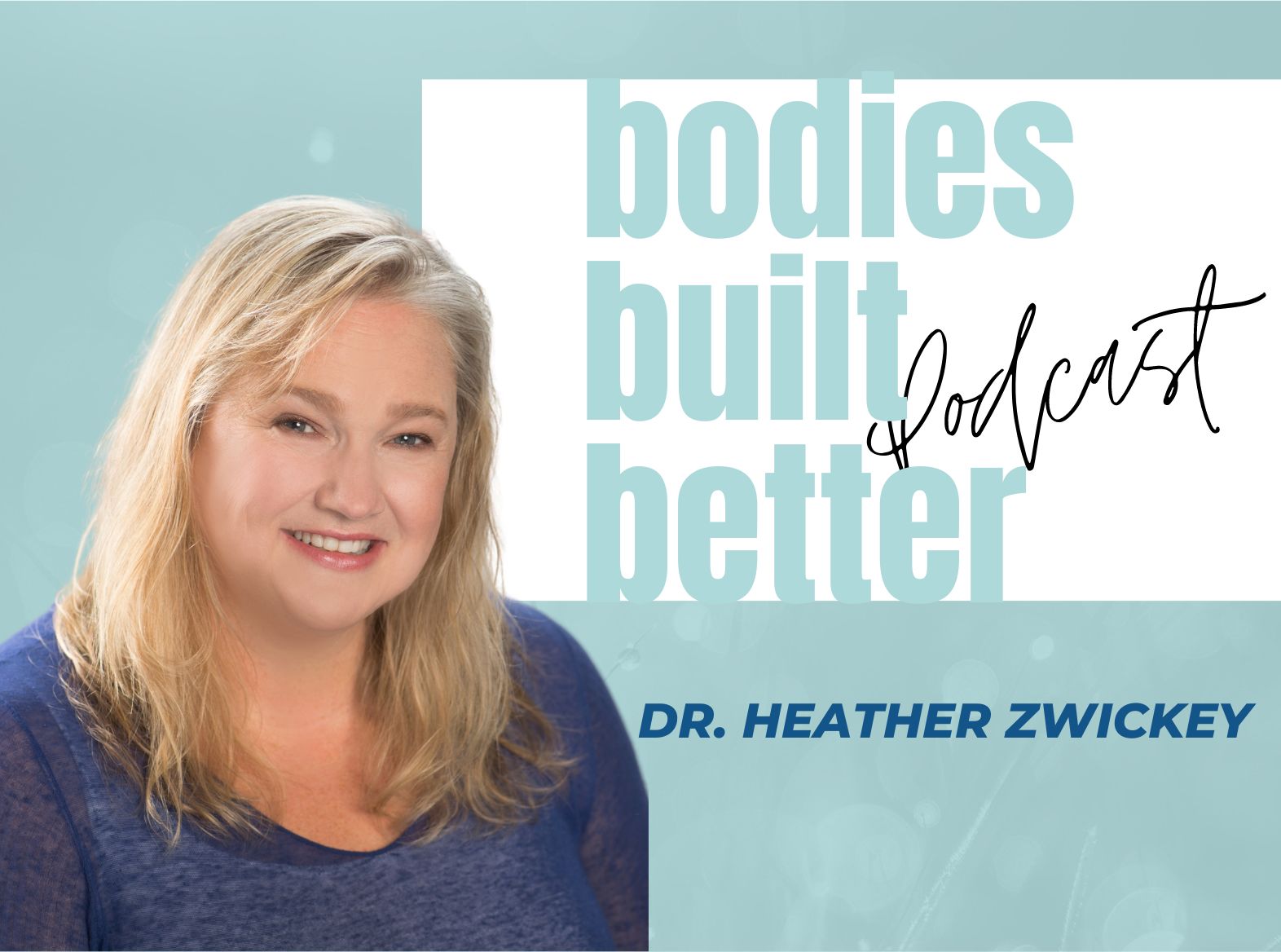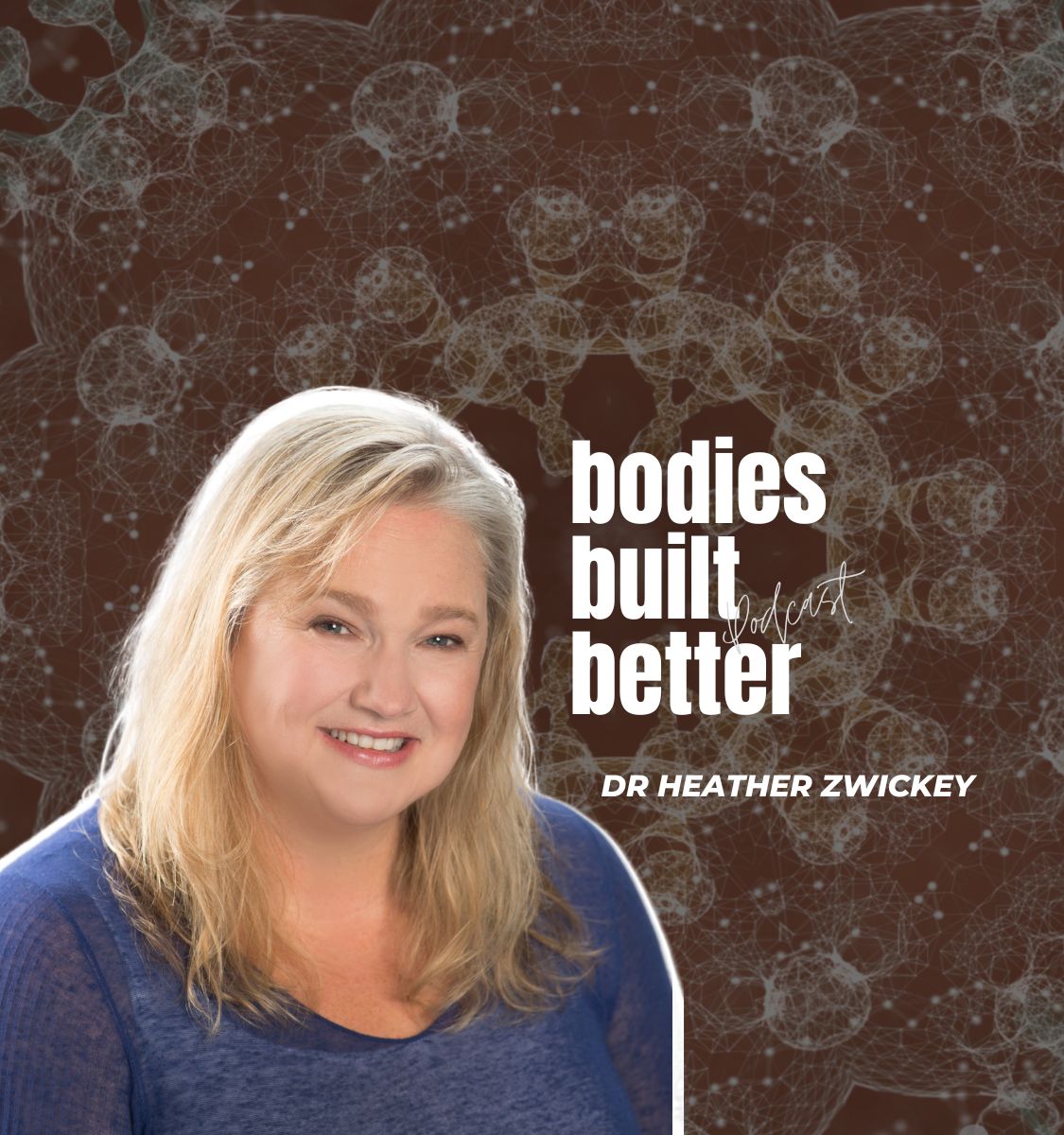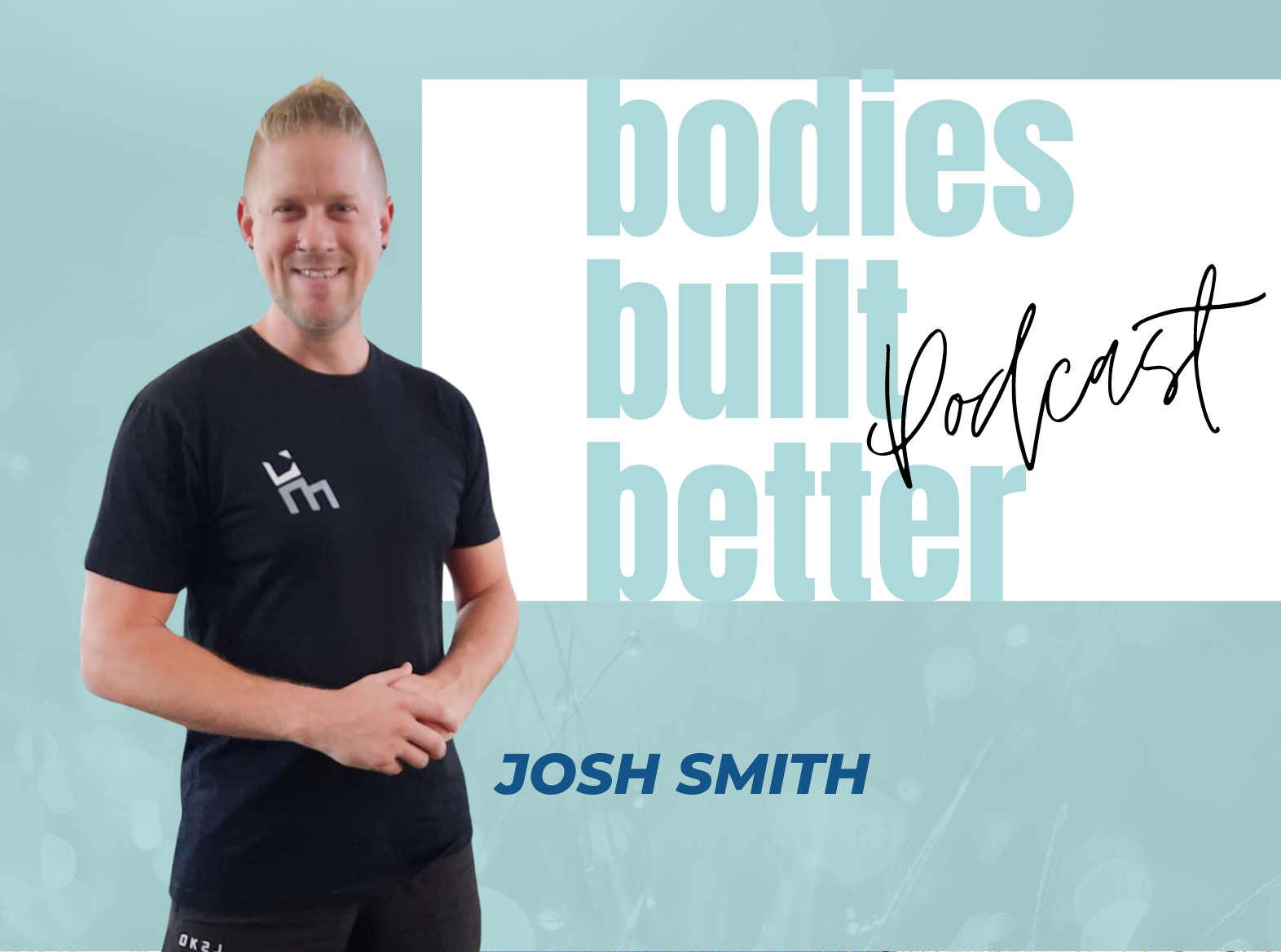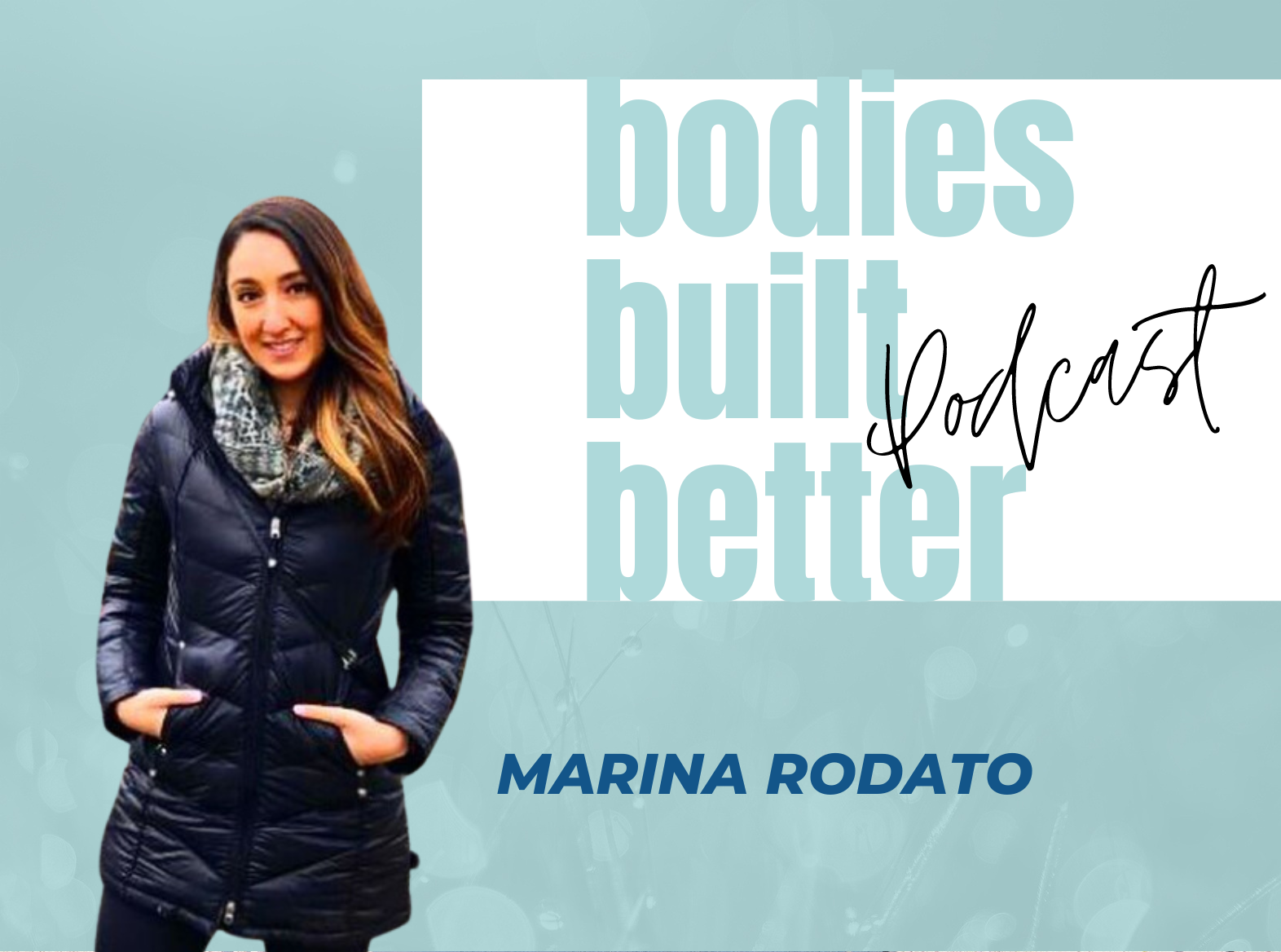Understanding the Microbiome: What It Is and How It Impacts Your Health
Jackie 3:11
Heather, thank you so much for chatting with me today. Welcome to the bodies built better podcast.
Heather 3:15
Thanks for inviting me, I’m glad to be here.
Jackie 3:19
It’s so good to have you. We’re talking all things microbiome. And it’s something that I’m only just starting to learn more about. And it’s so important and we should all know more about the microbiome and how important it is to our health and our immunity and you know, the impact it has on autoimmune conditions as well. So let’s start with the most basic actually, it’s not the most basic question at all. It started certainly where we need to start. What is the microbiome?
Heather 3:52
It’s a great question. We keep hearing it everywhere. And I don’t know if a lot of people know exactly what it is. But the microbiome are all of the microorganisms, which means bacteria, virus, yeast, all of those sorts of things that live in us and honest. So right now, whether you feel it or not your skin is covered in microorganisms. That is microbiome, and we would call that the skin microbiome. Your gut is filled with microorganisms. That would be the gut microbiome. And it turns out that almost every system in the body has its own microbiome.
The Interconnected Nature Of Our Microbiomes
Jackie 4:34
Wow, okay. And so does each part of us in terms of the microbiome from our skin or in our hair or in our gut or in our mouth? Do they all affect one another?
Heather 4:48
They do, yeah. So what’s interesting is the microbes are constantly communicating with each other, and they’re communicating with you. They’re what we call a symbiote, meaning there’s a symbiosis between you and your microbiome. So they have to know exactly what it is you’re doing. And your cells have to know what it is that they are doing, so that they can interact with each other. I like to think of–have you ever seen those pictures of giraffes that have the birds sitting on their back? Yeah. And the microbiome is the little bird sitting on the back of the giraffe. It’s right there. And if the giraffe starts walking, the birds got to know because it’s got to move along with the giraffe, right? So the microbiome is it’s reacting to your environment, everything that you do.
Maintaining a Healthy Microbiome in Challenging Environments
Jackie 5:37
Okay, so. Okay, let’s say our environment is not such a great one. And so the little birdies’ microbiome, on the skin is being affected. Oh, yeah, that then affects everything inside of us.
Heather 5:54
Indeed, it does. So we’re now starting to see that air pollution, which, of course, is going to affect our skin when we walk outside, and whether that air pollution is from fumes from cars, or from wildfire smoke, when you experience air pollution, and that pollution touches your skin, it’s going to have an effect on the microbiome first, your skin microbiome is going to send an alert to the rest of the microbes in your body to say, hey, there’s something wrong here. Right? So it may be that, that pollution kills them. It may be that the pollution causes them to change which microbes are more dominant and than others. But it absolutely has an effect both on your skin and the rest of your body.
Jackie 6:48
That’s almost a little scary. To know that how much of an impact something like air pollution has?
Heather 6:57
Oh, it’s–it’s intense when you start thinking about the number of things that we’re exposed to, just in our day to day life? Yeah, absolutely. And what’s interesting is the microbiome is the canary in the coal mine, have you ever heard of that phrase, it’s like they would use to put a canary a little bird into the coal mine. And then if the canary died, they knew it wasn’t safe for miners or be there. So think about it this way with your microbes, the average human cell is going to divide once every 24 hours to seven days, the microbiome, those little microbes are dividing every 40 minutes to two hours. So they’re far more responsive to the environment than your cells are. So when they start dying, they die first. And they tell us, hey, there’s something wrong, we need to fix this, so that we don’t kill the cells that are keeping us alive.
Feeding the Microbiome: How to Nourish Your Body’s Hidden Superorganism
Jackie 7:59
Okay, so on that, if they need to fix this, how to, how does that happen? When, how, do they regenerate if they’re in an environment that’s not great for them?
Heather 8:10
Food. So the thing that feeds the microbiome is our diet. And this turns out to be one of the reasons why our diet is so important. We think of our diet as feeding our body and feeding our brains. But really, our diet is feeding our microbiome first. And they, again, let’s go back to that bird analogy. They chew up all of the food, and then they feed that processed worm back to our body. Okay, so the microbiome chews up the food and what it makes we call metabolites, because it’s metabolism that they’re undergoing, right? And those metabolites then have an effect on every different organ in our body. So what you feed your microbiome ultimately determines what’s going to be available for your body to use as its food.
Jackie 9:09
And of course, next question, what is the best food for our microbiome?
Heather 9:14
I think we probably need to argue about that one. Most of us know what the best foods are. So there’s been some really interesting research done on this lately. The American Gut Project, which is run by Rob Knight’s group in San Diego, has done research on this. And they asked that question of, like, should you be a vegetarian? Should you be a carnivore? Should you be a vegetarian but also eat fish? What they discovered was really interesting. It didn’t matter. Didn’t matter if you were vegetarian, didn’t matter if you were carnivore, what mattered was that you get 30 plant based foods per week. Okay, let me restate that because that’s a lot of 30 plant based foods per week. So let’s think about it, plant based food, vegetables, fruit, but also nuts, beans, spices, coffee, tea, all of those things are plant based foods. So your goal is to diversify the vegetables and the fruit and the plant based foods that you’re eating, such that you’re getting 30 different plant based foods per week. So instead of eating that gigantic salad, that’s all spinach, throwing some strawberries and some almonds, and some pine nuts and all of the things that are going to make it a more diverse set of foods as opposed to a single food. And I think where this is really hard is if you’re single, because if you’re single buying 30 different plant based foods per week can get expensive, right? So that’s when I see people doing things like making smoothies, and having frozen fruits and vegetables that they can throw into their smoothies, or eating soup and throwing more basil and thyme and oregano into their soup. So there’s all sorts of tricks to diversifying those plant based foods that you get. But that’s, the big trick is 30 plant based foods per week. Now, there’s been one follow up study that shows an even healthier microbiome is generated if you add fermented foods. So here we’re thinking about things like kombucha, sauerkraut, kimchi, all of those sorts of things. But this was, this was another interesting one. So if you just say fermented foods, which they did in this study, anybody who put that they were eating one or two fermented foods per week, didn’t actually see any diversity in their microbiome. It had to be three or more. And when they dove down into the data, it turned out that that was because if people were saying that they had one or two fermented foods per week, the one was beer, and the two was wine. No, yeah. So it turns out wine and beer, not so good for diversifying your microbiome. But if you go beyond wine and beer, and you add the kombucha, and the kimchi and the yoghurt, and all of those things, it turns out it is really good for your microbiome.
Jackie 12:29
Well, I’m glad we cleared that up. Right needed to exactly. So when we say okay, let’s go to the fermented foods for a second. Sure. Can that be? So for example, sauerkraut twice a week? That’s, that’s all you need. So that doesn’t need to be so different, as opposed to the plants, plant base.
Plant-Based Diets: What to Look Out for and How to Stay Healthy
Heather 12:53
Yeah, you don’t have to diversify the plant, the fermented foods as much as you need to diversify the plant based foods, because you get all of the diversity in the fermented–
Jackie 13:03
Foods. Yeah, it’s alive. Yeah. So then with the plant based–what happens if someone is like, yeah, I’m getting all of those, well, a lot of different plant based meals in, but then they’re adding like a whole bunch of other stuff like your, like your wines, and your beer, and your maybe a croissant for breakfast. And, you know, there’s–there’s plenty of dessert in there as well, like, at what, where’s the line? I mean, I don’t know if that’s been studied at all. But
Heather 13:39
Well, think about it. A croissant technically is a plant based food. Right? It’s wheat. And so there are those people who justify their diet going well, it’s a plant based food. Oh, that almond paste in my croissant. That’s also a plant based foods. Yeah. So it turns out that sugar is not so good for our microbiome. So–and I don’t think it can, it’s probably not so much of a surprise to those of us who know anything about nutrition. But sometimes you can’t avoid it. Maybe you’re out, you know, with friends and they offer you a piece of birthday cake. And it would be rude to not accept and so you ate that birthday cake. And all of a sudden you were exposed not only to the sugar, but maybe it wasn’t made with organic flour. And so now you’ve been exposed to pesticide right. So how do you start to make up for that? Currently, the best way we know of to do that is just eat more vegetables. There’s not a trick. Probiotics, do they fix it? No, um, post biotics might fix it. But I think the research on post biotics is still in its infancy. And do you know what I mean? When I say post biotics?
Jackie 15:02
Not at all.
Heather 15:04
Okay, so prebiotics are the food that feed the live microbes. So anything that–well, all those plants that we’re talking about, they’re all prebiotics because they feed live microbes. Probiotics are the live microbes. And then post biotics are what those microbes produce when they eat food. So you eat a prebiotic, you feed it to a probiotic, and then postbiotics is essentially what they poop out the other end, right? And then that’s what, we, what our cells use to generate energy. So we take this–remember the baby bird? So mama bird is our microbiome. It’s eating the worm, it’s processing and then it’s spitting it back out for ourselves to eat it, that spit out. That’s post-biotics and we’re starting to see post-biotics show up in the marketplace now. You can find them in things like antiperspirants and, and in some food products. Yeah. Because what they are–remember, is there, these bacterial metabolites that are trying to bring your microbiome back into balance? Now, you might say antiperspirant, why would we put a post-biotic and anti per sprint? Microbes right under your arm? Right. That’s one of the things that we smell when you sweat. So, so we’re starting to see to get that health benefit on our skin. We’re seeing post-biotics put into skin products.
Supporting Your Gut Microbiome with Postbiotics
Jackie 16:43
Right? Yeah. Where can I get that? If we’re–so with the post biotics, if we’re taking that, what if our microbiome isn’t in a really great or healthy condition to begin with? Does that still help?
Heather 17:06
In fact, that’s probably the best time to use a postbiotic. So think about it. If you’re eating a prebiotic, and you don’t have all of the right microbes in your gut, you might be missing the microbe that’s going to chop up the carrot and feed it to the rest of them, but if you take a post biotic the carrot is preprocessed, you already ran it through the blender, and you’ve got the pulp on the other side. So the post-biotic bypasses the dysbiotic gut, or bypasses the dysbiotic skin. And in skin, you actually see a really rapid turnaround. I’ve actually seen post-biotics work on ectopic eczema and it doesn’t take days, it takes hours. And you see the–I know, you see the ectopic eczema clear up. It’s pretty amazing
Jackie 18:01
that he’s incredible. Why–why haven’t we heard more about post-biotics?
Heather 18:07
They’re brand new. Is, they hit the market about two years ago. And before that they were in the scientific literature for–since about 2017. So we’re at six years, usually, it takes you know, between 20 and 25. So, so you’re hearing about it here first.
Jackie 18:28
Yeah. Oh, hopefully gets out quicker with, with you doing your work and like this?
Heather 18:35
Well, I think it will, because I think it’s the next big wave that we’re gonna see, we’ve seen probiotics come and I wouldn’t say go they’re still pretty popular. But probiotics, again, kind of need your gut to be intact. Whereas post-biotics say we don’t care what’s going on in your gut. We’re just going to preprocess all that stuff and feed it to you.
Where to find Dr Heather Zwicky:
Website: www.heatherzwickey.com/
Instagram: @hzwickey
If you enjoyed this episode of The Bodies Built Better Podcast please hit SUBSCRIBE and share it with your friends.
Head over to The Bodies Built Better podcast page – https://jackietann.com/the-bodies-built-better-podcast/
Follow @jackietann_rmt and @bodiesbuiltbetter on Instagram
Got questions, comments, or feedback? Get in touch via the above social media handles.








